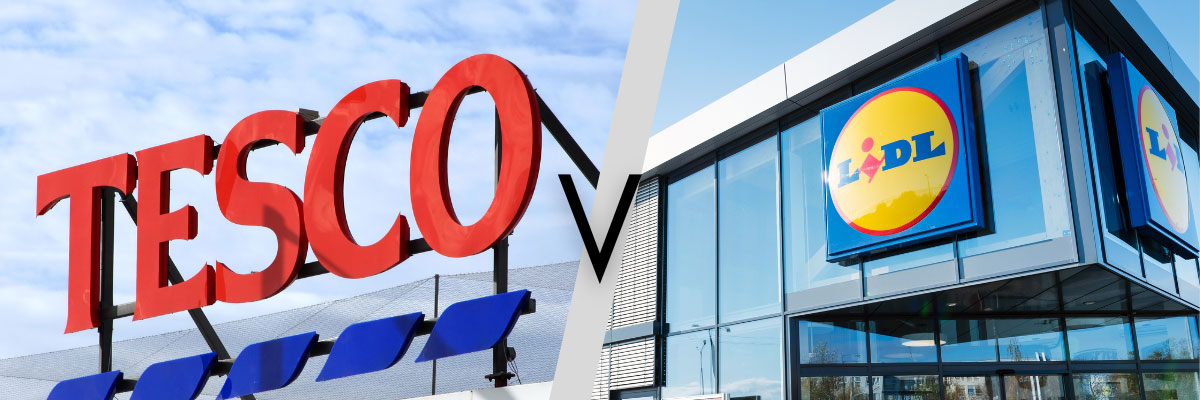Posted Thursday 4th May 2023
Lidl sued Tesco in respect of its blue and yellow logo for i) Trade Mark infringement; ii) Passing Off and iii) Copyright infringement.
Lidl asserted its trademark rights concerning two variations of its logo: one that features the word “Lidl” (the “Mark with Text“), and another that does not include the word “Lidl” (the “Wordless Mark“). Lidl raised concerns about Tesco’s Clubcard Prices promotion, which was launched in September 2020, in relation to two signs used by Tesco to promote their Clubcard loyalty scheme.
The main issue for Lidl appears to be that by virtue of Tesco using the blue and yellow colours in a graphically similar way to Lidl, that customers would connect the Tesco marks with Lidl’s main brand messaging which is offering quality products at affordable prices. Tesco counterclaimed alleging that the Wordless Mark was invalid because of non-use; that some of the classes registered hadn’t been used and that it had been registered in bad faith as Lidl had no real intention to use it at the date of registration.
Lidl alleged that in light of their contentions, Tesco was leveraging off its brand, resulting in its dilution and therefore infringed their trade marks. Lidl also alleged, in a similar way, that Tesco was misrepresenting that its products shared the same characteristics as Lidl and were hence passing off its products. Finally, Lidl asserted that they owned copyright in their trade marks, which Tesco had infringed by producing its marks.

Lidl won on all three claims. Why?
Tesco had a partial victory in respect of its counterclaim. Why?
Take-away messages for all brands
If you have a registered trade mark, use it or lose it. Actively monitor use of all registered trade marks, and in which classes, to try and mitigate any risk of challenges.
This article is for reference purposes only. It does not constitute legal advice and should not be relied upon as such. Specific legal advice about your specific circumstances should always be sought separately before taking or deciding not to take any action.
At Joelson, we recognise the importance of helping others and putting something back into the community. We have a history of fundraising for good causes and this year Joelson is proud to be supporting City Harvest.